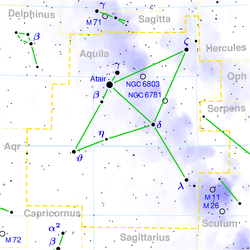NGC 6814 HST-JS
A while back, I processed a black and white version and mentioned that color would be coming sometime later. Well, here it is!
This new view of NGC 6814 taken a little over a year ago in 2013. It's a fabulous dataset especially in the V band. This image is composed of wideband infrared, near-infrared, and green light. Some blue, UV, or H-alpha would be nice but I can't complain because I didn't even have to clean a single cosmic ray. I expect to see a nice press release on this object sometime in the future. For now, you get a sneak peek from me.
Something to note about the processing: The infrared data did not cover the whole image, just most of it. The periphery of the image uses near-infrared data in place of the infrared so this is a mixed 3 channel and 2 channel + pseudo channel image. It's not too distracting but if you look carefully you'll easily notice some yellowish stars and background galaxies which should probably be more red than they are.
Data were collected for Proposal 12961, A Cepheid Distance to NGC6814.
Red: WFC3/IR F160W Green: WFC3/UVIS F814W Blue: WFC3/UVIS F555W
North is NOT up. It is 53° counter-clockwise from up.Relevante Bilder
Relevante Artikel
NGC 6814NGC 6814 ist eine Balkenspiralgalaxie mit aktivem Galaxienkern vom Hubble-Typ SBbc im Sternbild Adler am Nordsternhimmel. Sie ist schätzungsweise 75 Millionen Lichtjahre von der Milchstraße entfernt, hat einen Scheibendurchmesser von etwa 65.000 Lj und wird als Seyfertgalaxie klassifiziert. .. weiterlesen

